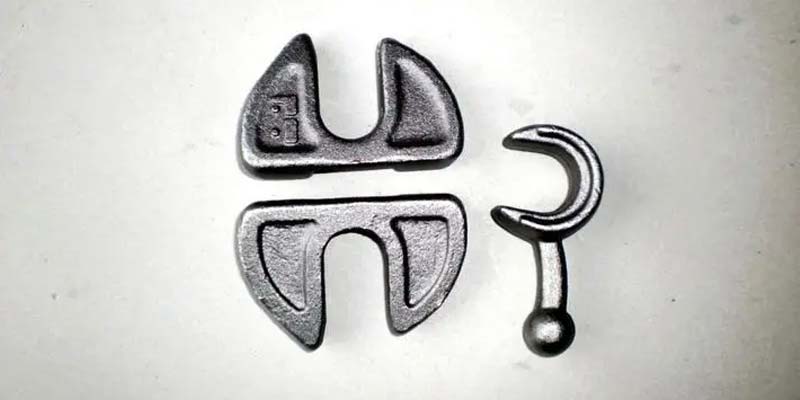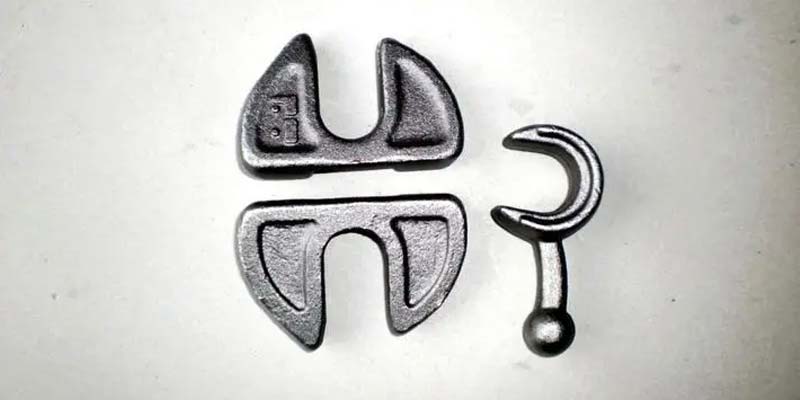- Contact Innally, Let you purchase forgings in China more favorable prices, products more assured!
- Hotline:+(86)15038323776 Email:innally@innally.com
What is the production process of artificial joint forging?
- Category: Stainless steel forging, Thermal forging
- |
- Date: 20/11/2023
the production process of artificial joint forgings includes multiple links, each link needs to be precisely controlled and processed to ensure that the quality and performance of the final product meet the requirements. At the same time, in the production process also need to comply with the relevant safety and environmental protection regulations to ensure the safety and environmental protection of the production process.
Product Details
The production process of artificial joint forging mainly includes the following links:
First, raw material preparation
Raw materials are the basis for the production of artificial joint forgings, usually using titanium alloy, stainless steel, cobalt chromium alloy and other materials. In the process of raw material preparation, raw materials need to be cut, polished, cleaned, etc., so as to facilitate subsequent forging and processing.
Second, mold design
Die is one of the key equipment for producing artificial joint forgings, which needs to be designed according to product requirements and customer needs. Mold design needs to take into account the shape, size, accuracy and other factors of the product, but also take into account the manufacturing difficulty and manufacturing costs.

Three, forging
Forging is one of the core links in the production of artificial joint forgings. By forming and processing raw materials at high temperature, the forgings that meet the product requirements can be obtained. In the forging process, the temperature, pressure, deformation and other parameters need to be precisely controlled to ensure that the shape and quality of the forging meet the requirements.
- Heat Treatment
Heat treatment is the process of heating and cooling the forging at high temperatures to change the mechanical properties and microstructure of the material. In the heat treatment process, it is necessary to develop the corresponding heat treatment process according to the different types of materials and product requirements to ensure that the material properties of the forgings meet the requirements.
Five, mechanical processing
Machining is the process of cutting, grinding and other treatments of forgings to obtain precision parts of the desired shape and size. In the machining process, it is necessary to use high-precision machine tools and tools to accurately process the forgings to meet the product accuracy requirements.
Six, surface treatment
Surface treatment is a treatment process to improve the corrosion resistance and beauty of forgings, including shot blasting, sandblasting, polishing and other processes. In the surface treatment process, it is necessary to use the corresponding surface treatment equipment and process to surface treatment the forging to meet the appearance and quality requirements of the product.
Seven, quality testing
Quality inspection is the process of quality inspection and control of artificial joint forgings produced. Quality testing includes appearance testing, size testing, non-destructive testing and other aspects to ensure that the quality of forging meets the standard requirements.
- Packaging and transportation
Packaging and transportation is the process of packaging and transportation of artificial joint forgings that have passed the test. Packaging and transportation needs to take into account factors such as product protection and transportation efficiency, while complying with relevant packaging and transportation regulations.
In short, the production process of artificial joint forgings includes multiple links, each link needs to be precisely controlled and processed to ensure that the quality and performance of the final product meet the requirements. At the same time, in the production process also need to comply with the relevant safety and environmental protection regulations to ensure the safety and environmental protection of the production process.
nannan
INNALLY mainly provides you with various types of cast and forged parts products. Welcome your inquiries! innally@innally.com
Related Products
Search
Forging center
- Steel forgings
- Aluminium alloy forging
- Titanium alloy forging
- Stainless steel forging
- Copper forging
- Automotive forgings
- Locomotive forging
- Bicycle forgings
- Motorcycle forging
- Rigging and fasteners
- Bearing forging
- Electric power fittings
- Marine forging
- Mechanical forgings for metalworking
- Mining machinery forgings
- Marine engineering forgings
- Construction machinery forgings
Popular product

© 2025. All Rights Reserved.







